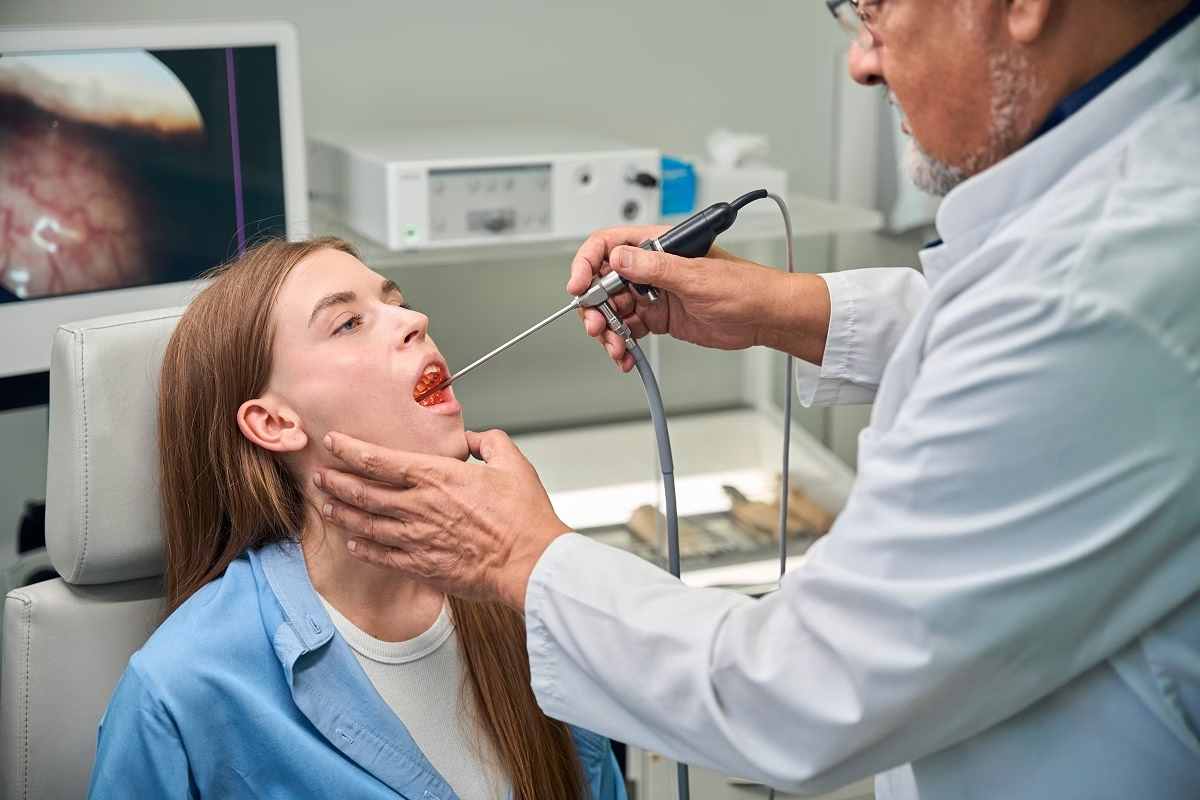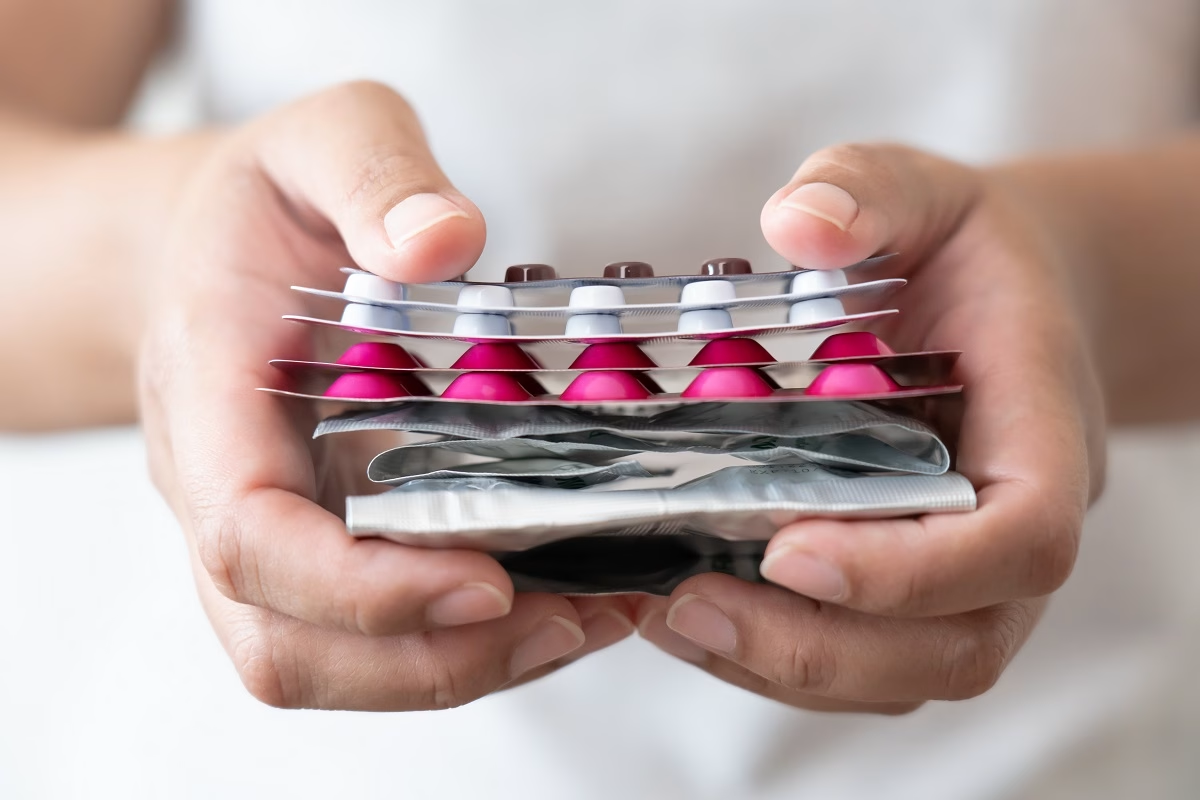An infection in the throat and tonsils caused by a type of bacteria known as A Streptococcus (group A strep) is called strep throat. In some cases, this condition may cause severe inflammation and a sore throat. Commonly, to diagnose this condition quickly, doctors perform a throat culture test and treat it with antibiotics (a group of medicines used to treat bacterial infections).
In general, there are more than 120 strains of the group A Streptococcus bacteria (GAS). For example, strep throat is a type of GAS infection. In rare cases, this disorder may cause more serious health conditions, including rheumatic fever. This condition may cause permanent damage to the heart muscle and its valves. That’s why it is important to see a doctor if you suspect you have strep throat.
This condition occurs quite commonly around the world, and it affects about 616 million people each year. Furthermore, this condition is the most common cause of sore throat in children and adults. In the United States, this condition accounts for 5% to 15% of new cases of sore throat in adults and 15% to 35% in children.
Symptoms
In the early stages, this condition causes a sore throat that often begins suddenly and a fever. When the condition advances, it may also cause other symptoms. For example:
- Chills
- Headaches
- Appetite changes
- Abdominal (belly) pain
- Nausea
- Vomiting
There is a symptom (cough) that strep throat rarely causes. In some cases, it may indicate a viral infection.
Moreover, people who have strep throat may notice that their throat and tonsils appear red, sore, and swollen. Some people may also have white spots, patches, or streaks of pus on the affected area and petechiae (small red spots on the mouth’s roof).
Sometimes, strep throat may cause scarlet fever, but it depends on the strain of bacteria you get. First, it often affects the neck and chest, and then may spread to other areas of the body. In addition, GAS may also infect the skin and cause sores. This infection is known as impetigo.
Causes
Strep throat occurs due to the GAS bacteria. However, if you develop a sore throat due to this bacterium, it often is different from other cases of sore throat (such as those caused by a virus). Furthermore, this is a very contagious condition as it can spread even if a person does not have symptoms. In any case, those who look sick or have symptoms are more contagious.
Usually, this disorder is no longer contagious after the incubation period. It often lasts between 2-5 days. In normal circumstances, a person would not be contagious after several days of taking antibiotics.
How Does Strep Throat Spread?
Generally, this bacterium easily spreads from one person to another, especially among family members. It usually spreads through direct contact and respiratory droplets.
Direct Contact
In such cases, the bacteria often spread through direct contact with infected sores on the skin or come in contact with the fluid from them.
Respiratory Droplets
The bacteria that cause this condition usually live in the nose and throat. Therefore, when an infected person sneezes, coughs, and talks, the bacteria spread through respiratory droplets. It can infect other people if they breathe in the droplets, touch objects that contain these droplets, or share personal items (such as drinking from the same glass).
Risk Factors
While this condition can affect anyone, some people are at increased risk of developing it. These include:
- Children and adolescents (between the ages of 5 and 15)
- Adults who are in close contact with infected children (including parents, teachers, and caregivers)
- People who live or work in crowded environments (such as military barracks, crowded households, and others)
- Those who have a weakened immune system (the immune system may become weakened due to certain medicines or infections, including HIV infection, immunosuppressants, cancer treatments, and others)
What Happens if Strep Throat is Left Untreated?
If you ignore the symptoms and do not get treatment, it may lead to some complications. Check below some examples:
- Sinus or ear infections – These infections occur when bacteria cause inflammation in the ears and sinuses.
- Abscesses – These are pockets of pus that often form around the tonsils.
- Guttate psoriasis – This disorder causes small, red, and scaly spots on the arms, legs, and torso.
- Scarlet fever – This infection often causes a red and bumpy rash throughout the body.
- Rheumatic fever – This is a serious health condition that negatively affects the heart valves.
- Post-streptococcal glomerulonephritis – This is a kidney disorder that may develop after strep infections.
- Invasive streptococcal infection – This type of infection often occurs when bacteria enter the tissue. Sometimes, this infection can be life-threatening, especially if it happens with streptococcal toxic shock syndrome, necrotizing fasciitis, and other serious infections. Without immediate treatment, it may lead to death.
- Pneumonia
- Skin infections
- PANDAS (Pediatric Autoimmune Neuropsychiatric Disorders associated with strep infections)
This document does not contain all possible complications of strep throat. In any case, you can consult with your doctor about ways to prevent the complications listed above.
How to Prevent Strep Throat?
One of the best ways to prevent this infection is good hygiene. It involves frequent washing of the hands with soap and warm water, especially after touching surfaces or objects that may contain this bacterium. Check below for additional tips that may also help reduce the risk of getting strep throat:
- If it is not possible to wash the hands, use an alcohol-based hand sanitizer.
- Cough or sneeze into your elbow if you do not have a tissue. Never use your hands.
- Avoid sharing cups and utensils with other people, especially if they are sick.
Diagnosis
Typically, doctors initiate the diagnosis with a physical examination to detect abnormalities associated with the disease. Thereafter, they may ask some questions about your medical history and symptoms. However, to confirm this condition, doctors may perform a strep throat test to check for the presence of group A Streptococcus bacteria. It also helps rule out viral infections that cause symptoms similar to strep throat. During this test, doctors will use a swab to perform a fast strep test to check for bacteria. It often takes approximately 20 minutes. Sometimes, this test can be done several times to make sure you have this disorder.
Treatment
The primary treatment for people with strep throat is usually antibiotics. This group of medicines is used to treat infections caused by bacteria. Usually, doctors prescribe Amoxicillin and Penicillin, but they may recommend other antibiotics. Sometimes, physicians may recommend antibiotics in liquid or injection form that should be taken for 10 days. It is very important to take antibiotics exactly as recommended by your doctor. Otherwise, the infection may return.
Frequently Asked Questions
How long does strep throat last?
Usually, people begin to feel better within a few days of starting antibiotics. Commonly, the symptoms of strep throat disappear completely between 7 to 10 days.
Does strep throat go away on its own?
No, without treatment, this condition usually does not go away. Furthermore, if you ignore the symptoms and leave it untreated, it may lead to serious and even life-threatening health conditions. For more details, discuss it with your healthcare professional.
What are home remedies for strep throat?
Doctors may recommend some home remedies along with antibiotics to relieve the symptoms caused by strep throat. Check below some examples:
- Add in your diet soft foods (including applesauce)
- Drink plenty of water
- Gargle with warm salt water
- Use pain relievers (including Ibuprofen or Acetaminophen)
Never give your child Aspirin without a doctor’s approval because it may lead to a life-threatening disorder known as Reye’s syndrome. Ask your healthcare provider if you have any other questions.




